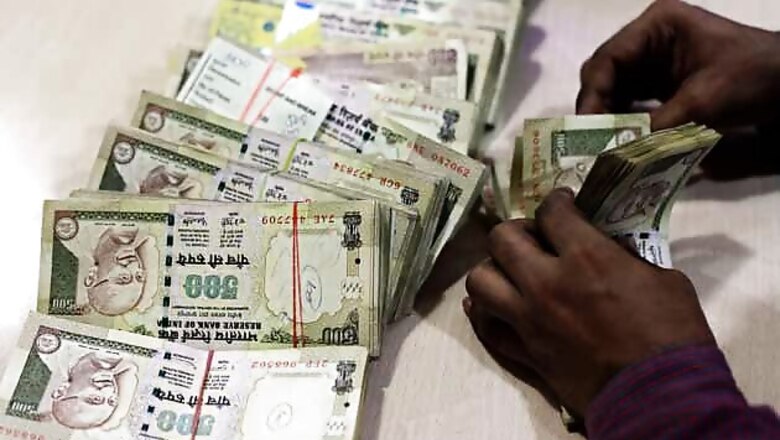
views
Mumbai: The Reserve Bank of India's battle to contain a falling rupee just got tougher. The current account deficit is widening and a weak global investment climate coupled with policy paralysis in New Delhi, sticky inflation and slowing growth have increased the aversion of foreign investors to India, pushing the capital account into the red.
Last week's move by rating agency Standard & Poor's to cut the country's credit rating outlook to "negative" has complicated matters further for the RBI, which has few options other than intervention and tinkering with rules on export credit to encourage inflows, RBI officials say.
"The main problem now is lack of confidence among investors and this is getting reinforced every time by either data or events like S&P cutting rating outlook," said a senior RBI official who is not authorised to speak on record to the media.
"When risk aversion is high, the success rate of intervention is low and that is why we are seeing rupee at such low levels despite intervention," he added.
The rupee fell as much as 0.5 per cent immediately after S&P's move but has recovered much of that loss.
Still, it is down nearly 6 per cent since February, recording most of the drop in March and April as foreign investment dried up. It had touched a record low of 54.30 to the dollar in December.
India's balance of payments slipped into the red for the first time in three years in the December quarter as dollar inflows shrunk and imports soared.
It could worsen given India's need to import 80 per cent of its oil, high crude prices, and unhappy foreign investors.
Foreign investments into Indian stocks have swung into negative with an $545 million outflow in April from a robust $7.1 billion net inflow in February. Foreign direct investments fell to $2.2 billion in February from $5.7 billion in May 2011.
"Symbolic significance"
These are some of the concerns that UBS took into account when it said it expects the rupee to test 56 per dollar this year.
"If we are right that the exchange rate takes its cues more from the capital account side till better fundamentals emerge then regulatory risk must rise in importance," UBS wrote in the note.
"In this respect (the) negative outlook on India sovereign credit by S&P may not have much immediate impact, but has great symbolic significance."
That leaves RBI in a bind. Selling dollars to defend the rupee without policy reforms provides only temporary respite and further reduces its reserves.
India's foreign reserves fell to around $295 billion on April 20 from about $321 billion on September 2, after the RBI sold dollars to prop up the currency.
The RBI is officially agnostic about the level of the currency but steps in to smooth volatility and took several administrative and market moves to defend it in late 2011.
The RBI has sold $20.14 billion in the spot market from September to February besides intervening in the forwards.
The country's foreign exchange cushion is dwindling. S&P figures India has reserves to cover about six months of current account payments, down from eight months in 2008 and 2009.
"We work only reactively when it comes to the currency. The proactive measures are to be taken by the government. Surely it will be a problem for us to control the currency if they (government) don't do so," said a second RBI official.
However, if S&P's move forces New Delhi to get its act together, then funds could return quickly, given India's robust long-term growth prospects.
New Delhi, embroiled in several corruption scandals, has put off foreign investors with recent plans to retroactively tax indirect investments and target tax havens. The Congress party-led government's bargaining power to push through key reforms like raising fuel prices and allowing foreign supermarket chains was further weakened after recent state election defeats.
"Economic activity is going on - we do not have lock-outs in factories. But government is not facilitating as it is too busy fire-fighting corruption, scams," said the third RBI official.
















Comments
0 comment